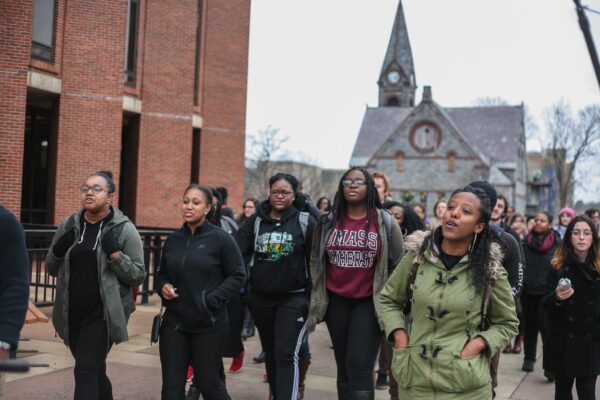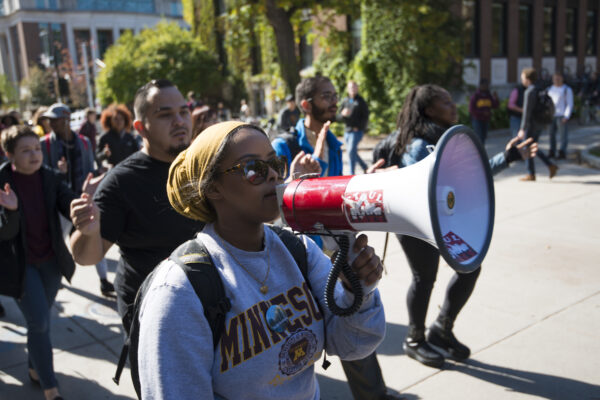At the start of 2024, the media narrative picked up where it left off before the holidays—painting a picture of U.S. college campuses immersed in division and unrest over a number of issues, particularly the response to the war between Israel and Hamas and the heated debate over diversity, equity, and inclusion (DEI).
But at thousands of colleges and universities around the country, the reality is quite different.
Presidents are focused on successfully leading their campuses during these challenging times, and a major part of that effort is to create an environment where everyone belongs. Think of your own campus, or one with which you are deeply familiar. Picture a student finding sanctuary in a quiet corner of the student union after a difficult day. Or a first-generation professor who is happy to return for the new semester thanks to a supportive mentoring program.
These aren’t isolated anecdotes, but rather they reflect a movement within higher education toward building thriving communities and identifying the vital conditions necessary to make it so. Institutions are shifting the narrative, asking: What does it take to create a community where every member feels embraced, supported, and empowered to flourish?
The original Thriving Communities initiative is a national framework outlined in The Federal Plan for Equitable Long-Term Recovery and Resilience, published in the wake of the COVID-19 pandemic. The plan utilizes the vital conditions for health and well-being to create and sustain a healthy community that has, at its core, a sense of belonging for every member. As the plan pointed out, “Healthy, fulfilling relationships and strong social supports provide a foundation for individuals and families to thrive. These relationships and supports build social ties, trust, and cooperation in communities and foster connections that bring people together and shape a common vision.”
Nationally, these vital conditions within the thriving community framework include access to education, health care, food, housing, transportation, and work. This framework provides a road map for leaders to envision, create, and lead unified communities. Rather than thinking about each vital condition as a separate variable, envision an ecosystem in which all of these vital conditions intersect and—together—result in every community member thriving and feeling that they are exactly where they belong.
This model is not only applicable to regional communities, but it is also a perfect fit for higher education institutions and the vital conditions that are needed for faculty, staff, and students to feel they can belong and thrive within and among their respective campus communities. Presidents and institutional leaders who are besieged with internal and external pressures and politics have the opportunity to bring together and implement these conditions. They include but are not limited to access to food, housing, quality educational opportunities, meaningful connections with peers, and meaningful employment while a student and after graduation.
In my previous post, I discussed the criteria needed for presidential leadership to effectively manage crises. These four criteria are for presidents to ensure that:
- Students, faculty, and staff on campuses feel safe from physical violence
- Students, faculty, and staff have the emotional and mental health support that may be needed
- Campuses remain an educational haven for students to learn and demonstrate critical thinking, healthy conversations, perspective taking, and intercultural communication to successfully cross lines of difference
- Consistent communication is made to the campus and its constituents that these three criteria are of the highest priority for the institution
Keeping those four criteria in mind and extending from the national Thriving Community initiative model, I suggest that successful presidents and institutional leaders embrace and provide access to the following vital conditions for every student, faculty, and staff:
- Mental and physical health support
- Housing on and/or off campus
- Learning in and outside of the classroom
- Services needed for academic success
- Financial support services
- Food on campus or through food pantries
- Work during their educational experiences and post-graduation
- Input to the institutional mission and vision
As with any physical environment, the higher education community (whether virtual or face-to-face) is an ecosystem where each of these vital conditions must coexist in concert with the others in order to truly become a thriving community. Successful presidents who are focused on these vital conditions in their communities lead with the vision of how, when, where, and why these vital conditions can coexist, be supported, and be accessible to all faculty, staff, and students.
During my tenure as president at the University of La Verne in Southern California from 2011 to 2023, the campus actively fostered the thriving community model.
We built a magnificent structure in the middle of the campus named the Ludwick Center for Spirituality, Cultural Understanding, and Community Engagement that focuses on creating collaboration spaces and hosting events and series, bringing together faculty, staff, and students to explore their differences, have civil conversations, and become critical thinkers and problem-solvers. At the same time, the campus also built the Randall Lewis Center for Well-Being and Research. This center houses a food pantry, workout and mindfulness areas, and healthy living workshops. These strategic investments—in physical spaces, classes, and cocurricular activities—became tangible expressions of our dedication to inclusion and belonging.
While the country wrestles with a myriad of other hotly debated higher education topics, success will be measured by those visionary, compassionate, collaborative, humble, authentic, and resilient institutional presidents and leaders who create thriving communities, ensuring that the vital conditions coexist and are accessible for all campus constituents.
If you have any questions or comments about this blog post, please contact us.



